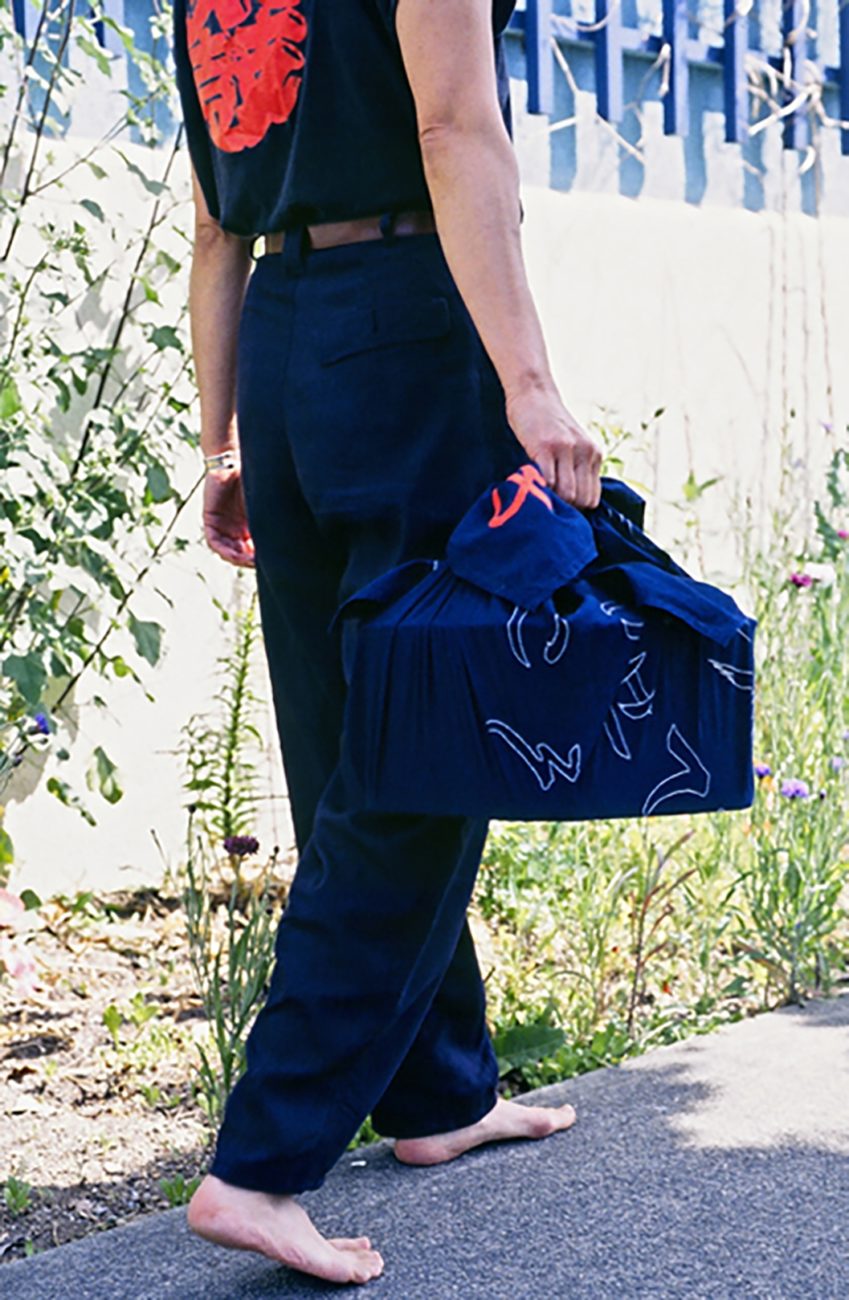
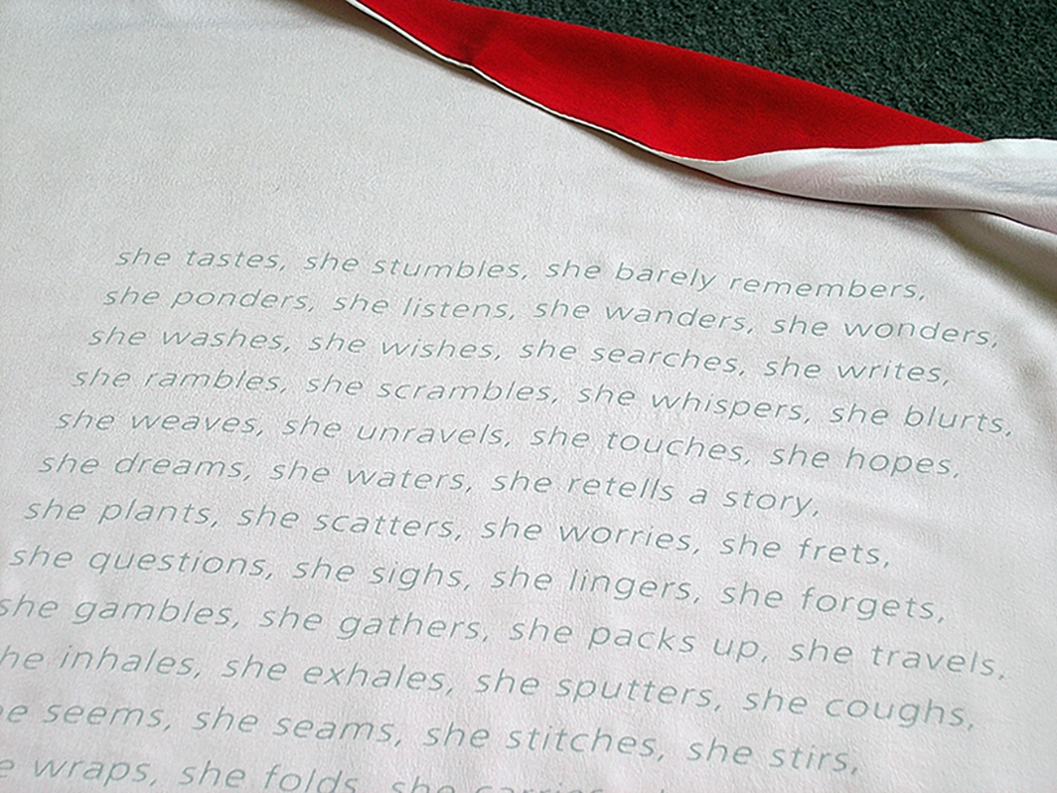
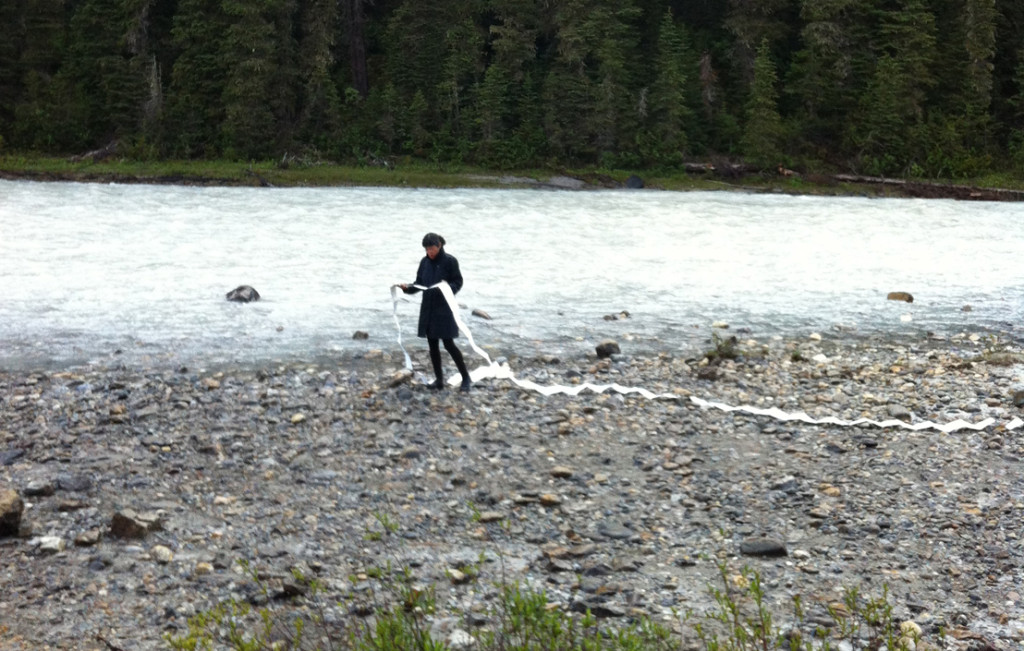
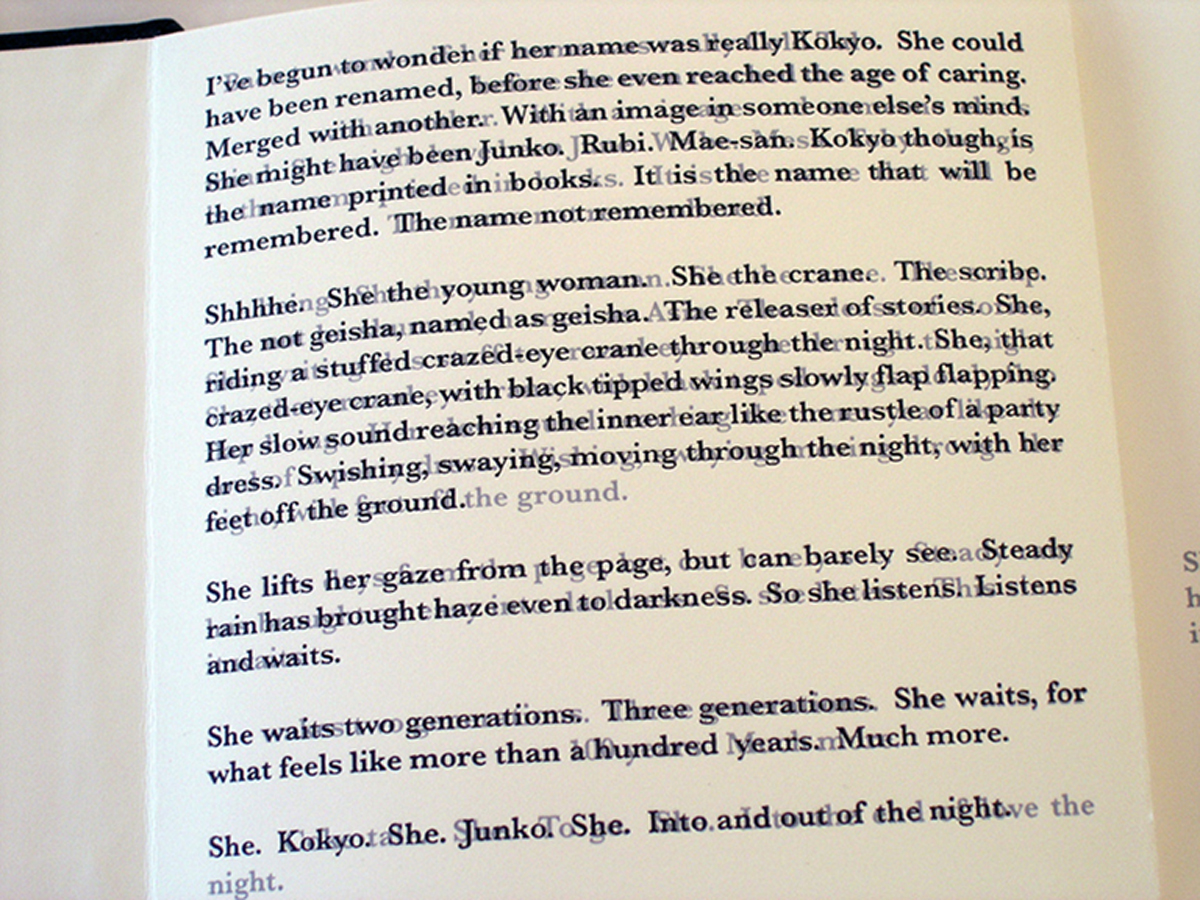
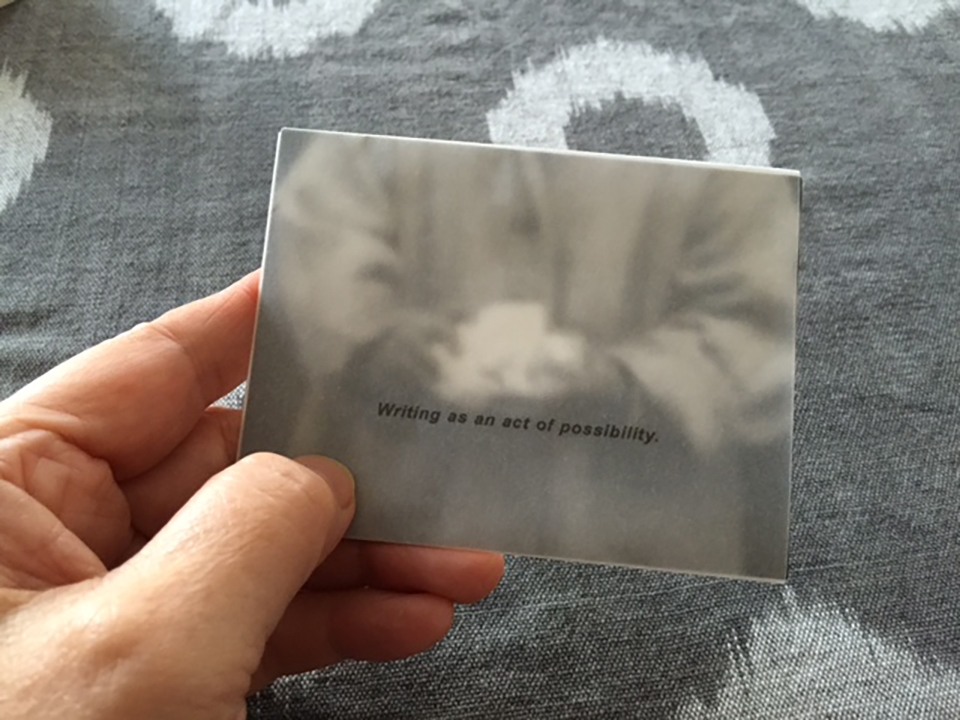
For a long time I have had an interest in language; in what gets carried and conveyed, hidden and revealed, through one’s use of language; and in what gets discovered and understood when working with language as one aspect of an artistic practice. I am interested in stories that aren’t necessarily narratives told in one stretch, from beginning to end. My interest is in building, telling, and sharing stories in ways that might be experienced through glimmers and bits or felt in the relational spaces between locations and generations, between the dreams of night and the sensory experiences of day, between the uncanny and the mundane, and between the spoken and the heard.
wings walking water is a project and practice that plays in the osmotic space of both the known and the unknown and tends to flow backwards and forward in time, moving from location to location, site to site, even as I try to live and work mindful of each present moment and experience.
My practice involves processes of gleaning, gathering and dispersal, listening, sensing, writing, building, and simply being. It might show itself at times as a portable installation, as a glimmer passed from hand to hand, as a piece received in the mail, or as a performative act of sharing. I often think of it as a portability project, one that engages with notions of what gets carried within language and within body, memory, and the imagination.
I think it was back in 2007 that I first started naming my project wings walking water, but many of the ideas and contributing pieces began many years before that. The individual components so far have taken the form of postcards, bookworks, page works, sound or video pieces, photographs, poems, drawings, performative readings, and installations. I have no firm idea of what forms the project will take from here, although my love of working with bookworks won’t likely fade. There is something about the labour involved and the attention to detail that feels like a part of my voice. And there’s a sense of intimacy that seems possible when working with ones hands and especially when creating small works.
In 2006 when I began working with the voice recognition software iListen, I noticed how odd and uncanny some of the translations (transcriptions) were, so I began playing with the software, exploring what I call a spoken & heard process. That was the year I created the bookwork titled until my body says sleep (Kokyo), which I still consider a key part of this ongoing wings walking water project.
My hope with this website, is to use it as both a gathering place for some of the wings walking water pieces and as a kind of “studio” for playing with the works and my process, and to share some of this process and my practice with those who visit this site. What this website will become or how it functions may shift over time, but for now at least, this is how I am thinking of it.
My plan is to build it slowly. I’m going to try and add posts as I am working on new pieces, and over time I’d also like to begin to slowly create posts/pages that talk about some of the older wings walking water pieces, as well.
If you have any questions about my practice or want to share your thoughts on any of the works, feel free to add your comments. I’ll try to respond the next time I am on the website, building and creating pages.
Thanks for spending time with wings walking water.
Baco Ohama
(This website was started in May, 2013)
* * *
My images, poems, artworks, as well as my written texts that appear on this website are copyrighted from 2013, © Baco Ohama. If a photograph, poem, text, audio file, or video is of or from one of my earlier works, the copyright is for/from the original date of creation. My work cannot be copied or reproduced, used or reused without my written permission.
If I include a photograph of someone else’s work or an excerpt of their text in a posting, I will always acknowledge the original artist or writer, unless of course the work is anonymous. Even if a photograph of their work may be mine, the copyright of the original artwork or text remains with the artist or writer.